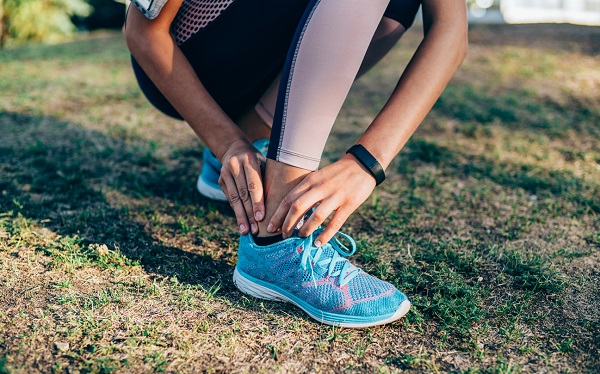-
So you’ve signed up for a running event. Well done! Now where to begin? We all have to start somewhere – none of us are born to run a marathon from the first day. That’s why training and preparation are so essential.
It’s important to be realistic and not set the bar too high for your training. Whether you have chosen to run 5 km, 10 km, a half marathon or marathon and beyond, consider how far out your race is and allow yourself enough time to be prepared.
The first few weeks are all about getting to know your limits, building on your base fitness and staring to work on your pace.
Choose your training program
If it’s been years since you tied up those runners, or you enjoy the occasional social run but have never been all that serious about it, you can find a beginner’s running program online to guide you.
Make sure when you choose your training program that it fits in with your lifestyle. If you know you can only fit in 2-3 runs a week, choose a shorter distance and instead of making your goal about achieving the distance, focus on your time instead.
Running is great when it’s social, so buddy up with someone and run together. Ask around your family, friends, neighbours or colleagues and see if anyone wants to run with you. It will help keep you on track and accountable to keep up your training.
Another good option is to join a local running group to help motivate and inspire you. parkrun holds nationwide free weekly runs that are open to all fitness levels and abilities. This can be a great way to get involved with the local community and find people who share the same passion as you – they have a running goal and they are out there to achieve it.
Get your free running training plan.
Get the gear
You’ll need a pair of supportive running shoes. Getting fitted correctly is important for preventing injury and sore feet, so it’s well worth going into a store for advice. A good shoe specialist can help you choose which shoes are ideal for you and your feet.
Make sure you purchase any new running gear weeks out from race day and get used to running in it. Do your long runs in it to ensure you don’t suffer from chaffing, rubbing or from a singlet that crawls up as you run. You want to be super comfortable.
How to train for a running event

-
Schedule in active recovery
I am a firm believer in taking a holistic approach to your training and listening to your body. Running should be about quality, not quantity. When your body feels sore or fatigued, take a break. Consider a remedial massage, or book in with a physio.
It’s also good to work your body in different ways. Why not incorporate a weekly yoga, pilates, swim or gym session to mix things up? Your body with thank you for it later.
Believe in yourself
As you get closer to race day, expect some nervousness – but rest assured your hard work and dedication will get you through this.
Remember that today is your day to go out there and prove to yourself that you can do this. Don’t be disheartened if it doesn’t go exactly to plan. Remember why you started and the effort you have put in to getting here. Enjoy the moment and celebrate your achievement. You did it!
Race day tips
- Don’t try new things on race day – like running gear, shoes, or what you eat or drink. You don’t want chaffing, blisters or a funny tummy.
- Prepare your gear the night before so you don’t forget anything you need in the morning –most runs start early.
- Plan your trip to the race. Make sure you arrive with enough time to park the car, jog to the start line if you have to, and make that last minute toilet stop or bag. You don’t want to be panicking and late for your run.
- Pick a playlist with music that inspires you and motivates you to run. Or, decide to ditch the tunes and really listen to the crowd and the atmosphere
- Get your family and friends to come along and support you. Often seeing your friends and family on course gives you that second wind, especially towards the end of your run when you are really working hard.
- Run for charity – you won’t give up when you know all that pounding into the pavement is helping out a great cause.
The Medibank Melbourne Marathon Festival
Be part of one of Australia's biggest running festivals, held across iconic Melbourne city locations on Sunday October 14, 2018. There's something for all levels, from a 3 km walk to the full marathon.
Find out more at melbournemarathon.com.au
-
Stretches for gym enthusiasts
8 stretches to help you cool down from workouts
-
Stretches for office workers
Stretch out your back and relieve stress
-
Stretches for runners
Stretch your legs, hips and back after a long run
-
How to walk 10,000 steps
Discover how to easily reach your goal of 10,000 steps daily.
-
Everything you need to know about parkrun
Been wondering what a parkrun looks like? Where do you go? What do you do? How do you sign up? Find out here.
-
Five ways to exercise when on a budget
You don’t need to spend money on gym memberships just to meet your fitness goals. Here are five free ways to stay healthy and active when you’re living on a budget.
Subscribe to receive the best from Live Better every week. Healthy recipes, exercise tips and activities, offers and promotions – everything to help you eat, move and feel better.
By clicking sign up I understand and agree to Medibank's privacy policy






